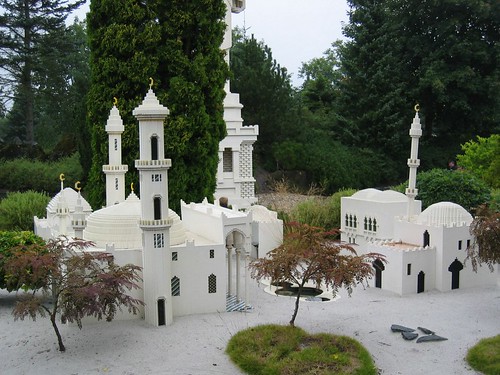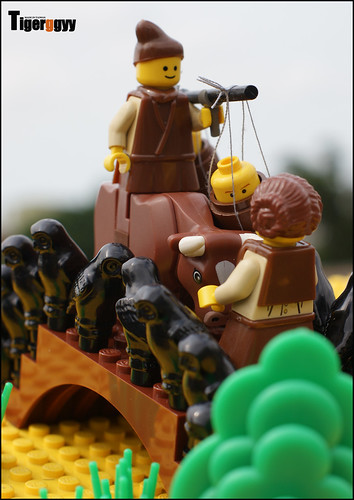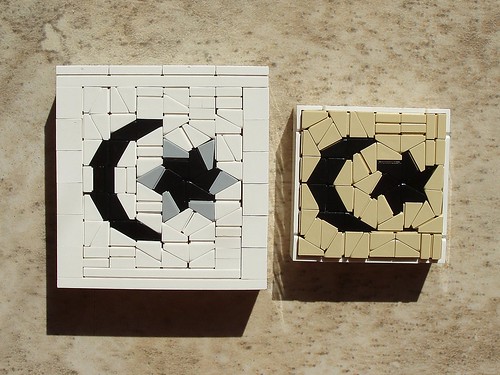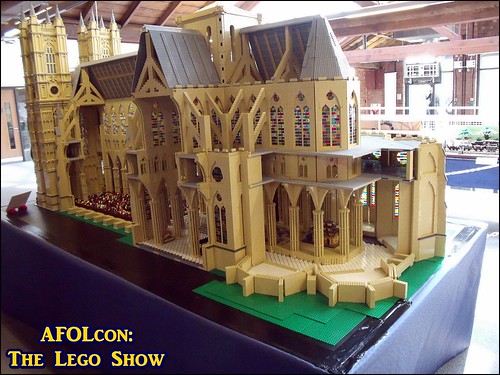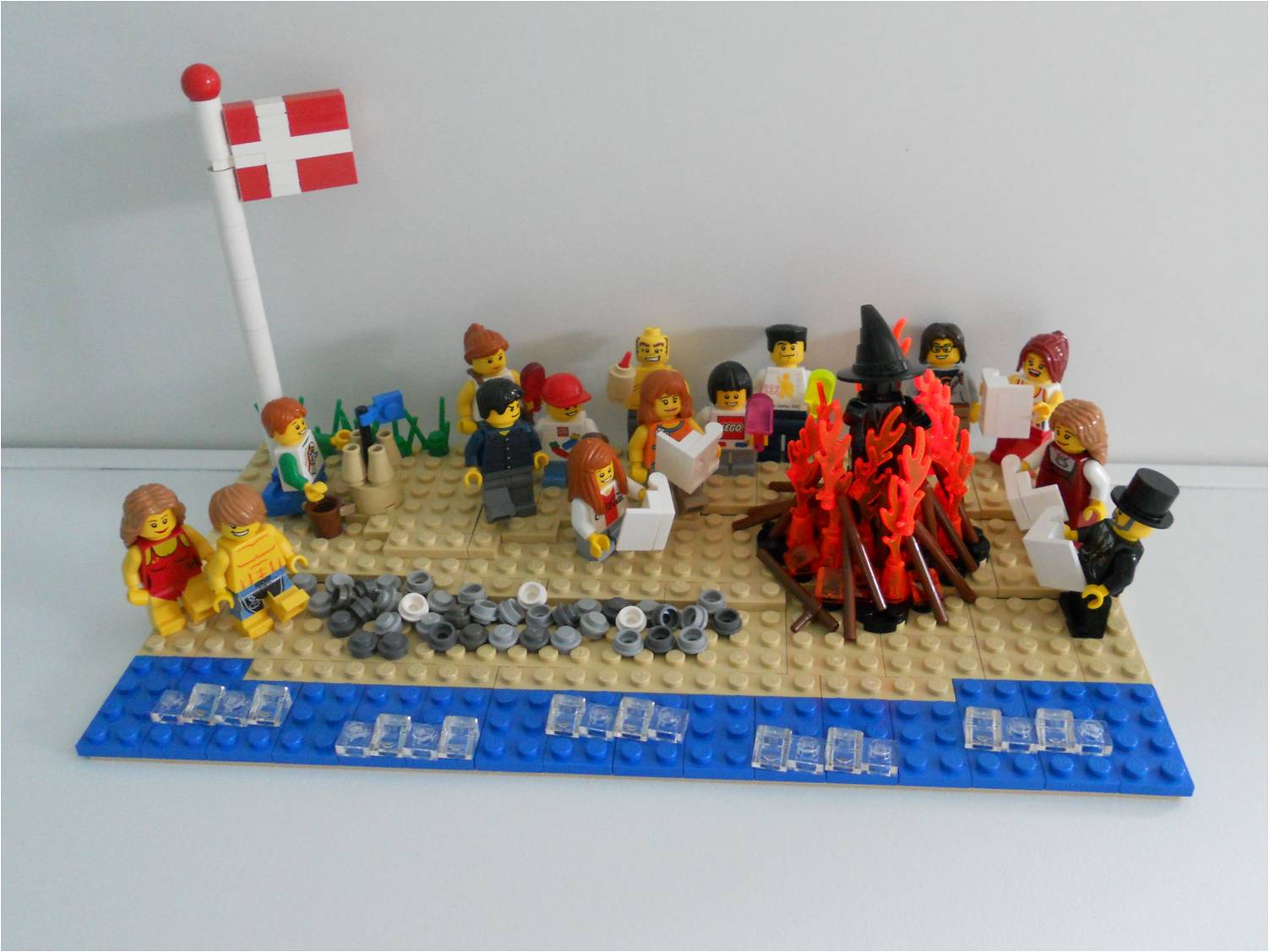Aripramz wishes us all a
Selamat Idul Fitri, which is a traditional Indonesian greeting for the Eid (holiday celebrating the end of Ramadan). "Mohon maaf lahir dan batin" is a request for forgiveness - this holiday is a time to atone for the wrongs that you have done to others in the previous year. It is also a time to travel to see relatives, and the 'musafeer' or traveler depicted here must be doing that.
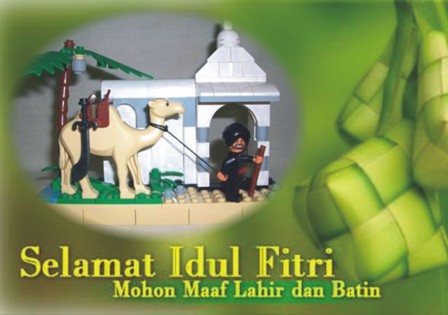
BTW, that image to the right of the LEGO picture is ketupat, an Indonesian food where rice is boiled inside a pouch made of woven palm leaves, as this is a characteristic dish eaten at Eid celebrations in Indonesia.


